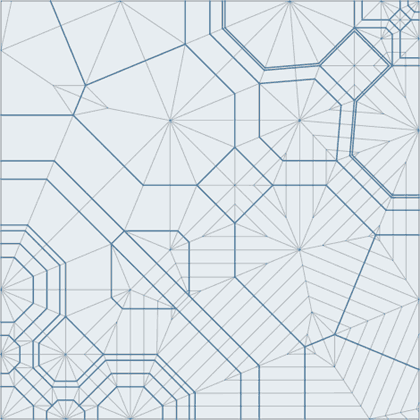Project 3- Line Drawings and Depth
This project was inspired by my recent experiences with learning and teaching origami. I had a 3 week residency at the Children’s museum where I taught people of all ages how to make paper sculptures from simple animal to more complex modular and tessellating patterns. I because really interested in the way people approached the folding, they were either eager to learn and confident in the ability to mold the paper into their desired form, or extremely skeptical that the result was going to work out. I still can’t see patterns beyon da certain complexity…I had no idea this: 
becomes this
:
I began thinking about how this mapping from 2D to 3D on a piece of paper occurs. There has a been a lot of research about projecting line drawings onto different planes to see when we see a 3D object.

At first, I thought that an autostereogram would help demonstrate the potential for a 2D object to become 3D, but then I realized it was a bit limiting since it cannot really be realized and compared as rapidly as other 3D viewing techniques. So I decided to go with stereovision. There is a Stereo library fro Processing that is fun to play with, but in the end it seemed like it would be easiest to write my own version.
The first program allows you to draw lines, or trails with the mouse and then create a stereo version of the image. It then shifts in place to pop out or pop in, generating a flip-book of sorts of the image you created.
The second program allows you to draw points on the canvas and then watch as lines randomly form between them to see what kind of 3D objects you can make with a given point range.
Here is a video illustrating what they can do (watch with red/green glasses if you can!)
The longer term goal is to combine this with origami crease finding algorithms such as Robert Lang’s treemaker: http://www.langorigami.com/science/computational/treemaker/treemaker.php#
and see if this could be a tool for designing 3D origami forms that seem like they would be impossible.